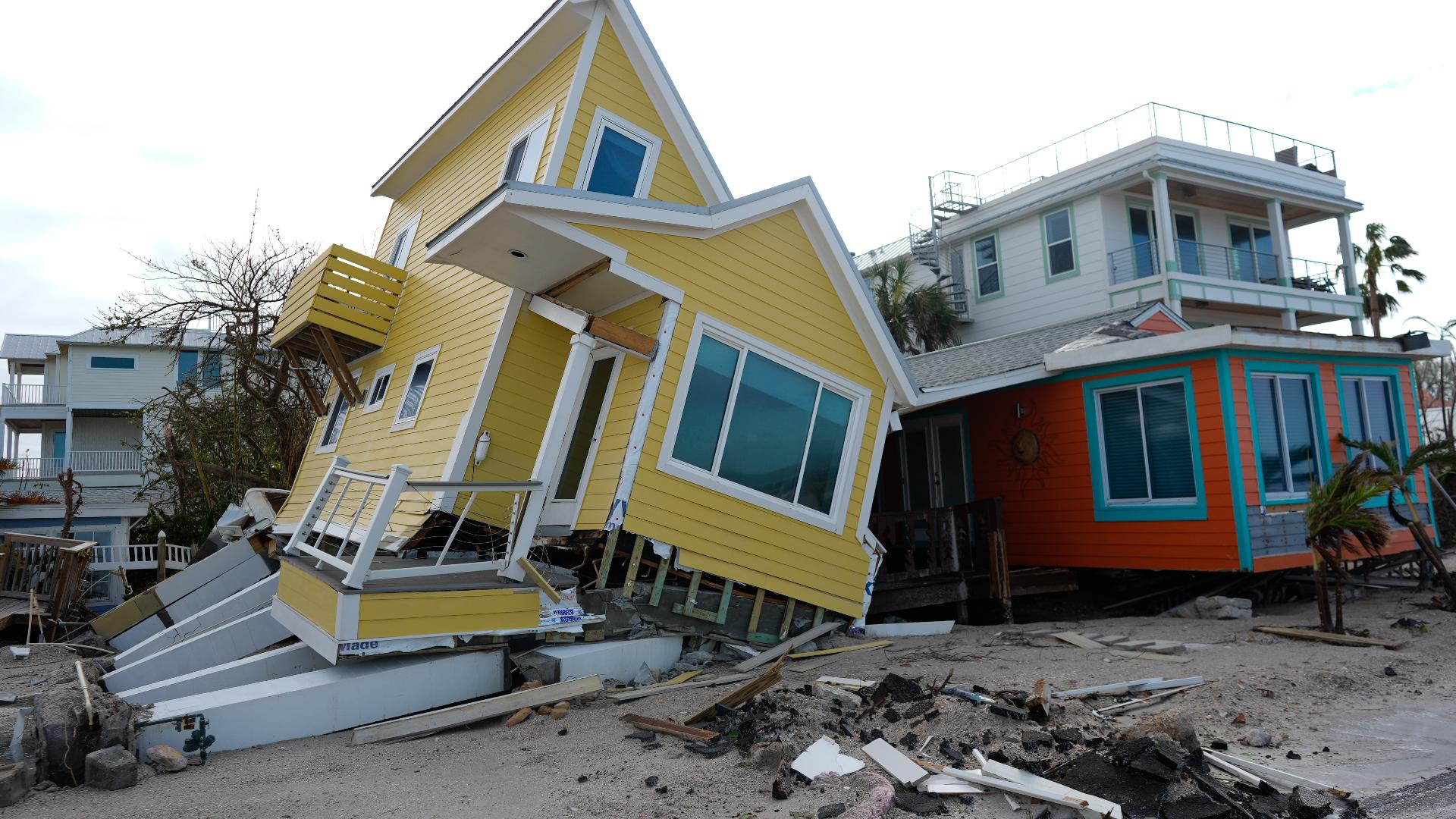COLUMBUS, Ohio — Hurricane Milton made landfall in Florida last week as a Category 3 storm, a relief from the Category 5 status it gained over the Gulf of Mexico — the difference potentially saving billions in property costs.
“It wasn't the worst case scenario that we thought it might be, which is really a positive thing,” said Shannon Martin, an insurance analyst at Bankrate. “Helene, though, was different. It basically moved up a mountain. It hit people. If you're living on a mountain, you're not expecting to need flood insurance. You've never needed it before, and that's new, and that's what's really making the whole nation kind of start paying attention when we say extreme weather is changing.”
Hurricane Milton is estimated to cost $30 to $50 billion in insured losses, according to analytics from Fitch Ratings. To put this in context, Hurricane Ian from 2022 had a similar path in Florida leading to $60 billion in damages.
After a slow start to the hurricane season, Milton could be the storm to push the insurance industry over the $100 billion line in losses, for the fifth year in a row.
“One of the things we look at is all storms, not just necessarily hurricane losses, but all storms,” said Jerry Glombicki, a senior director at Fitch Ratings. “When you look at that $100 billion loss, one of the major contributors to them is what we call severe convective storms. Basically, spring ice storms, thunderstorms that are strong, they happen more frequently. They're less severe, so they don’t necessarily get the attention of the hurricanes do. But since they happen more often into greater geographies, they actually cause more damage to it, and those are actually harder to predict than the hurricanes.”
Those storms could cost all of us more, across the board.
“If you have an insurance carrier that's spread out through throughout the country and they've experienced a heavy loss in a certain area, you might see some adjustments there, but then you also might see adjustments because carriers are readjusting their risk modeling based on future extreme weather events,” said Martin. “If you live somewhere where they're looking at it and they're saying, ‘Look, we think tornadoes are going to go up X percent in the next five years,’ you might see an increase not because of another state's loss, but because your future loss and your future risk is higher.”
Martin said the best thing to do to keep costs down is to contact your insurance agent and ask what your deductibility is, whether it is percentage based and how does your policy pay out.
She also suggests making a checklist, taking videos or pictures of all of your belongings now for future proof to insurance companies.

